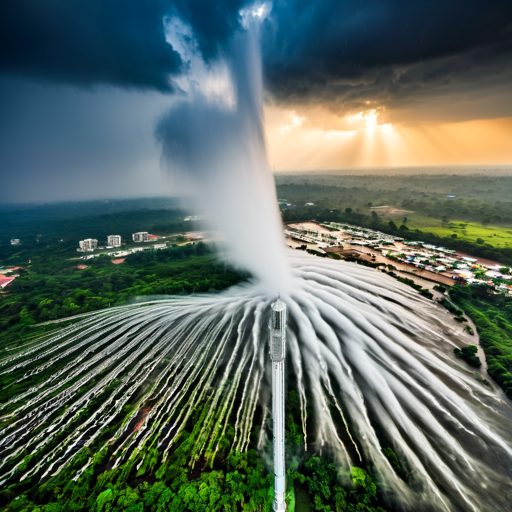
Rain Creation: IITM Pune’s Cloud Seeding!
Recommended for Meteorology
In recent years, the topic of cloud seeding has captured the imagination and curiosity of many, particularly in areas facing water scarcity. A remarkable cloud seeding experiment conducted in Solapur, a city in India, offers a comprehensive view of this innovative approach to enhancing rainfall.
Solapur, situated on the leeward side of the Western Ghats, is known for receiving low rainfall, making it an ideal location for such an experiment.
Listen to the news
Cloud Seeding Experiment
- The Cloud Seeding Adventure: This special project, called CAIPEEX phase-4, happened in the summers of 2018 and 2019. It was like a big science experiment to see if a method called hygroscopic seeding could make more rain from big, puffy clouds, and to figure out the best way to do cloud seeding.
Methodology and Findings
- In the experiment, scientists used two big airplanes to learn about clouds and to sprinkle tiny particles from calcium chloride flares into them. They looked at 276 big, puffy clouds. Then, they added particles to 150 clouds and left 122 clouds as they were. The scientists discovered that only some clouds, about 20-25 out of 100, made rain after they added the particles.
Results and Implications
- Scientists found that by using cloud seeding, they could make it rain 18% more, which is like adding a little more than 8 spoons of water in a rain shower. This special rain method helped add lots of water, like filling up about 867 big swimming pools! They also figured out that this way of making rain costs very little, like less than a small coin for each bottle of water made. If they use planes from our own country, it can be even cheaper, like saving half of your pocket money!
The Impact and Future of Cloud Seeding
The Solapur cloud seeding experiment stands as a significant milestone in the realm of meteorological science and water management. Notably, it has revealed several crucial aspects of cloud seeding:
This experiment taught us some cool things about making it rain:
- They learned that only some clouds can make rain when we help them. This means we have to be smart about which clouds we choose.
- In Solapur, where it’s really hard to get enough water, the extra rain from cloud seeding is super helpful.
- The scientists also made a special computer program that helps people figure out the best clouds to pick for seeding.
- Cloud seeding is really good at making more rain, but it can’t stop droughts all by itself. It’s just one part of solving the water shortage puzzle.”
Final Thoughts
In the end, the Solapur cloud seeding project shows us how this cool science can make more rain and help get more water. It’s like a starting point for learning more and using it in real life. By getting better at it and knowing more about tiny cloud parts, we might use cloud seeding to help solve the world’s water problems and take good care of our planet’s stuff.
Similar Stories
![]()
Curious Times is a leading newspaper and website for kids. We publish daily global news aligned to your learning levels (also as per NEP 2020): Foundational, Preparatory (Primary), Middle and Senior. So, check out the News tab for this. We bring kids’ favourite Curious Times Weekly newspaper every weekend with top news, feature stories and kids’ contributions. Also, check out daily JokesPoke, Tongue Twisters, Word of the Day and Quote of the Day, kids need it all the time.
Curious Times News Program for Schools for FREE. Over 5,000 schools and teachers from all over the world have joined our programme so that students and teachers can get FREE Educative Newspaper. Here, kids can take part in world events and win prizes and certificates for free through their schools.
Moreover, schools are sharing important School News, like interviews with the principal, notices about new students, contests, and results, not just on social media but also on a news website for kids and other schools.
Thus, do not wait any further, sign-up for your school for FREE.
The following social media platforms allow you to communicate with us: WhatsApp, Instagram, Facebook, Youtube, Twitter, and LinkedIn.
0 (Please login to give a Curious Clap to your friend.)
